Maybe it’s their tiger-like coloring, or perhaps it’s the widespread belief that orange cats are exceptionally friendly and outgoing. Whatever the reason, orange cats hold a special place in the hearts of cat lovers globally, from bustling New York City to glamorous Hollywood. Iconic felines like Garfield immediately spring to mind, embodying this charming image. Interestingly, studies, including one highlighted by National Geographic, suggest that orange cats are indeed often perceived and even behave as more social and amicable compared to their counterparts.
Many beloved orange cats are categorized as orange and white cat breeds, and the sheer variety of fluffy Orange Cat Breeds available is astounding. If you’re captivated by the idea of welcoming a friendly, orange feline into your family, you’re in luck! There are at least 11 remarkable breeds that frequently boast this sunny coloration, making them perfect candidates for your new companion.
11 Delightful Orange Cat Breeds to Consider
1. Turkish Angora
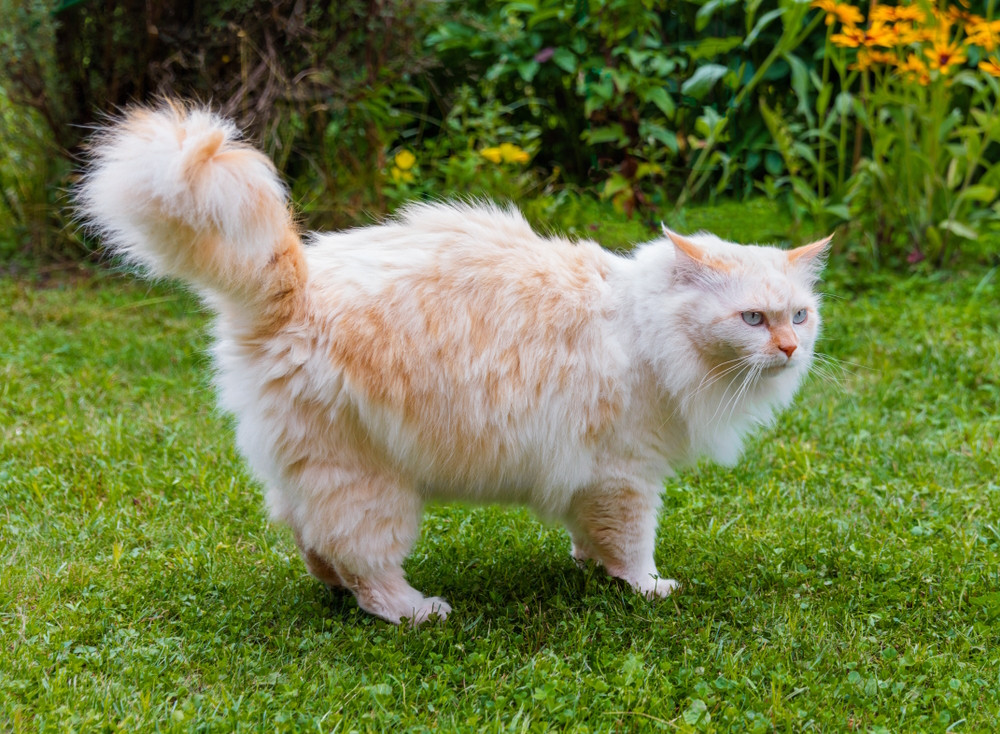 Turkish Angora cat in the garden
Turkish Angora cat in the garden
Image Credit: Vadim-Petrakov, Shutterstock
Originating from Turkey, the Turkish Angora stands as one of the oldest naturally evolved domestic cat breeds, with records dating back to the 1600s. Considered a national treasure in their homeland, these elegant felines initially presented with predominantly white coats and striking blue or green eyes. However, modern Turkish Angoras grace us with a spectrum of colors, including a particularly appealing orange tabby.
For a Turkish Angora to be officially registered with prestigious organizations like the Cat Fanciers’ Association, their lineage must be meticulously traceable back to Turkey, ensuring the preservation of this breed’s authentic heritage. Known for their graceful movements and fine, silky fur, they are intelligent and affectionate, making them wonderful family pets.
2. Scottish Fold
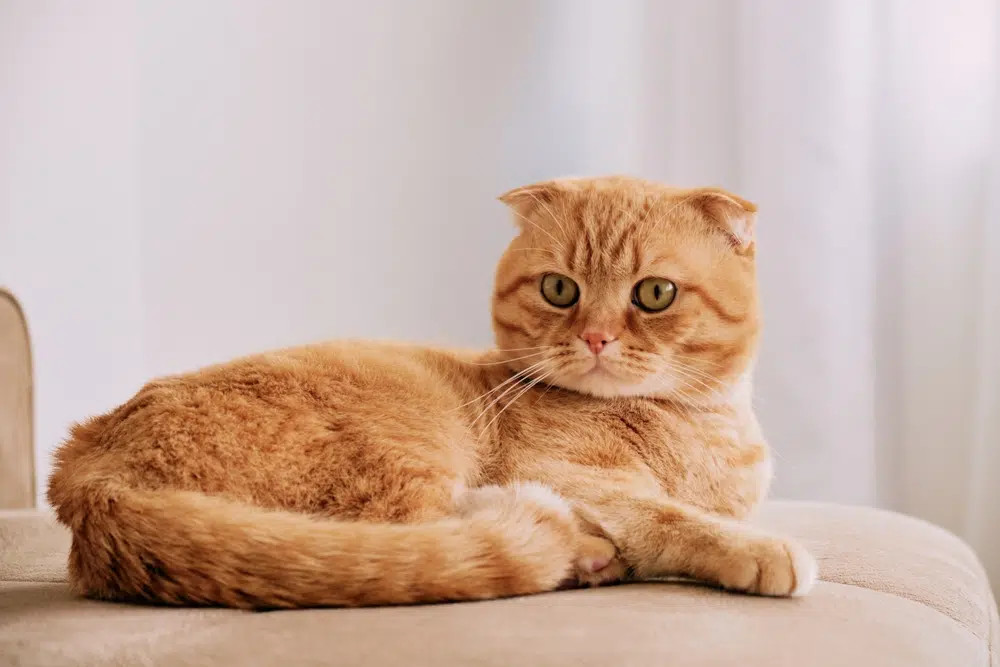 Scottish Fold Cat laying on a couch
Scottish Fold Cat laying on a couch
Image Credit: Alexander Sobol, Shutterstock
Instantly recognizable by their unique folded ears and sweetly rounded face, the Scottish Fold is undeniably one of the most endearing cat breeds. Their distinctive feature isn’t a result of deliberate selective breeding in its initial appearance. Instead, it arose spontaneously from a natural genetic mutation within a population of farm cats in Scotland. To establish the breed, these mutated cats were carefully bred with British Shorthairs and American Shorthairs.
Remarkably, every Scottish Fold can trace their ancestry back to Susie, the original cat who first exhibited this captivating ear mutation on that Scottish farm. Beyond their looks, Scottish Folds are known for their gentle and adaptable nature, often forming strong bonds with their families. They are moderately active and enjoy interactive play, making them delightful companions.
3. Persian Cat
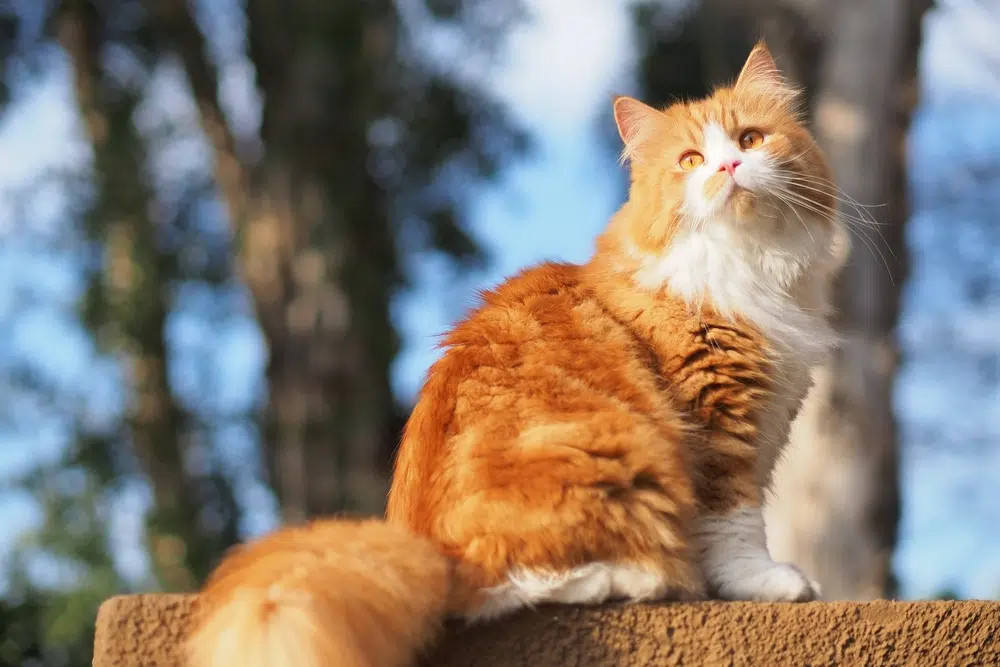 Orange Long Haired Bi Color Doll Face Persian Cat
Orange Long Haired Bi Color Doll Face Persian Cat
Image Credit: Light Hound Pictures, Shutterstock
This luxurious orange cat breed has enjoyed enduring popularity among royalty and the elite for centuries. Traditionally, Persians are characterized by a round, pansy-like face with a normal-length nose and a perpetually sweet expression. However, selective breeding trends have led to an increase in flatter-faced Persians, unfortunately making them more prone to certain health issues.
While white Persians may be the most classically recognized, orange Persians, particularly those with tabby markings, present some of the most strikingly beautiful and visually distinct patterns within the breed. Known for their calm and docile temperament, Persians are often described as “furniture with fur.” They thrive in serene environments and require regular grooming to maintain their magnificent long coats.
4. Munchkin
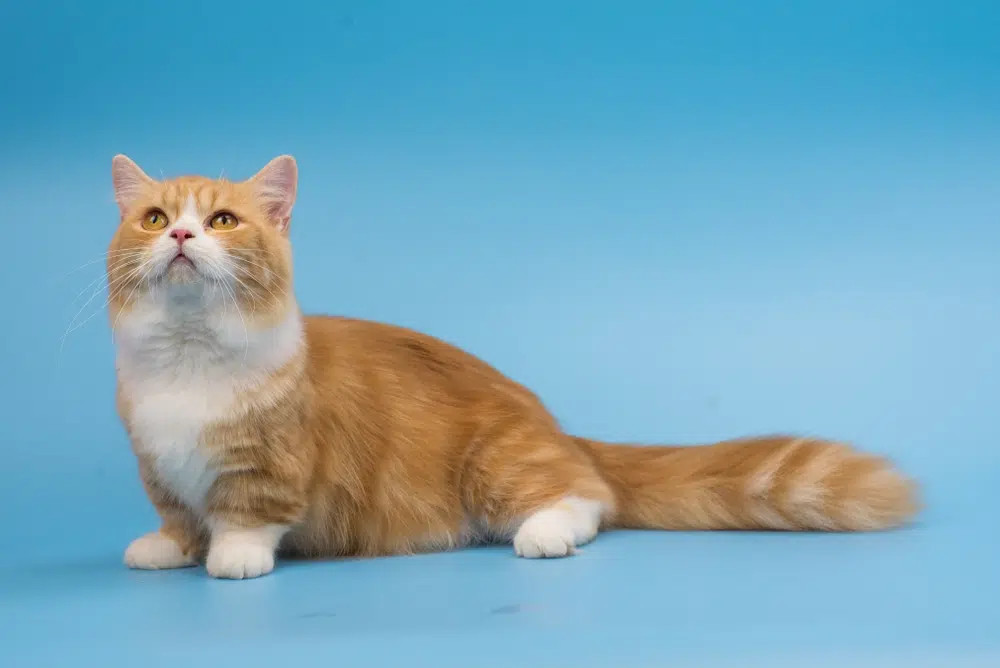 Orange Munchkin cat in sky blue background
Orange Munchkin cat in sky blue background
Image Credit: chatchai77, Shutterstock
Affectionately nicknamed the “sausage cat” due to their elongated body and very short legs, the Munchkin breed is instantly recognizable. Munchkins are considered to be the original dwarf cat breed. This distinctive trait is the result of a naturally occurring genetic mutation. However, their unique conformation makes them susceptible to certain health concerns, and some cat registries, such as the Governing Council of the Cat Fancy (GCCF), do not recognize the breed due to welfare concerns.
Despite their short legs, Munchkins are surprisingly agile and playful. They possess a curious and outgoing personality, enjoying interaction and exploration. Potential owners should be aware of the potential health issues associated with their breed.
5. Maine Coon Cat
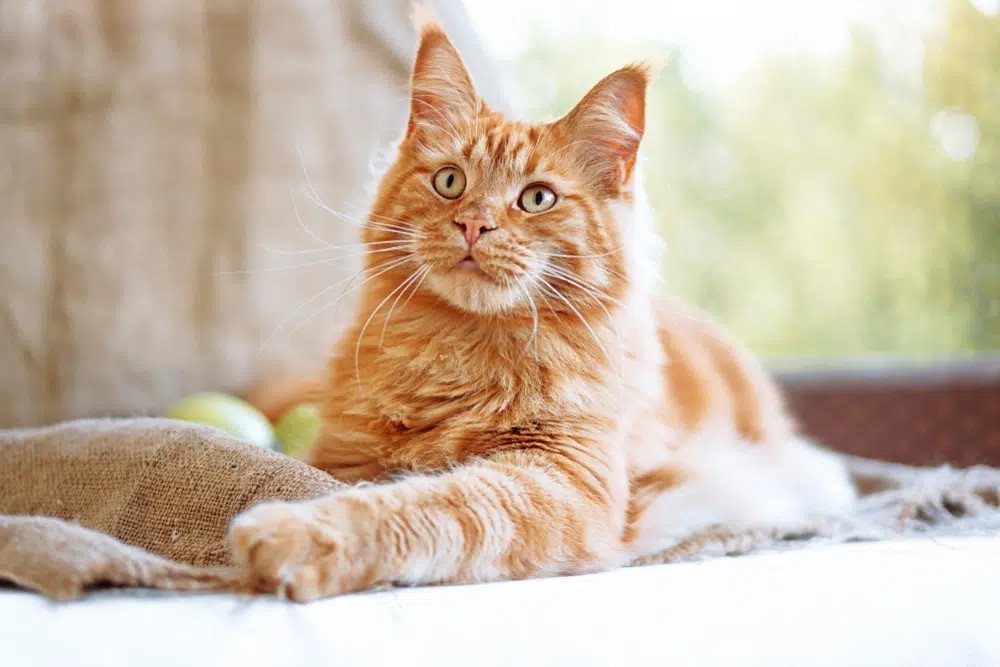 Ginger Maine coon cat on the balcony
Ginger Maine coon cat on the balcony
Image Credit: Meriluxa, Shutterstock
As the largest domesticated cat breed, the Maine Coon is also one of the oldest natural breeds in North America. This breed even holds the record for the world’s longest domestic cat in the Guinness Book of World Records, showcasing their impressive size. While they come in a variety of colors, orange and brown tabby patterns are particularly common. Maine Coons have rightfully earned the affectionate moniker of “gentle giants.”
This nickname stems from their remarkably gentle and affectionate nature, coupled with their substantial size. Some male Maine Coons can reach lengths exceeding three feet and weigh over 35 pounds. Despite their size, they are known for being playful, friendly, and excellent family pets. They are also known for their distinctive “chirping” vocalizations and love of water.
6. Exotic Shorthair Cat
 Exotic shorthair cat focusing in the foreground
Exotic shorthair cat focusing in the foreground
Image Credit: Wutlufaipy, Shutterstock
The Exotic Shorthair is essentially a short-haired version of the Persian cat, sharing many of the Persian’s characteristics, including the potential for a beautiful orange coat. Intriguingly, approximately one in four Exotic Shorthairs carries a recessive longhair gene, resulting in longhaired offspring. While these longhaired Exotics are not recognized as Persians by the Cat Fanciers’ Association, The International Cat Association (TICA) does classify them as Persians.
The American Cat Fanciers Association (ACFA) recognizes the longhaired Exotic as a separate breed altogether. Notably, Garfield, the world-famous cartoon cat with a penchant for lasagna, is widely believed to be an Exotic Shorthair, further cementing this breed’s association with orange coloration. Exotic Shorthairs retain the sweet and calm temperament of Persians but with a lower-maintenance coat.
7. Devon Rex
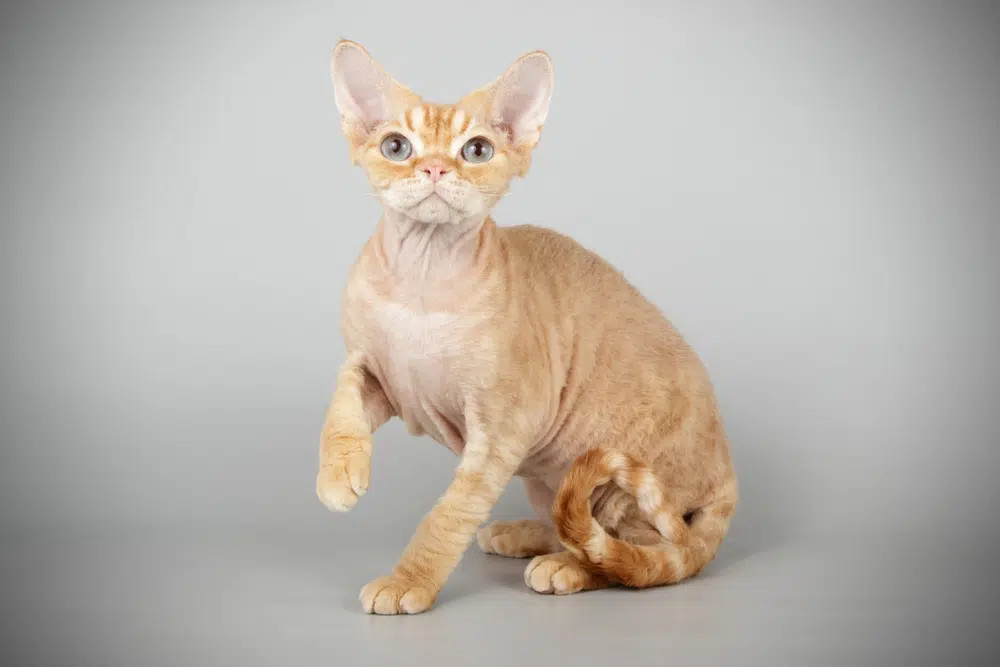 Red Devon Rex cat in gray background
Red Devon Rex cat in gray background
Image Credit: Oleksandr Volchanskyi, Shutterstock
With their oversized ears and a delicate, elfin face dominated by large, expressive eyes, the Devon Rex is a truly unique and captivating feline. They are known for their relaxed and sociable nature, exhibiting a playful demeanor that many describe as more dog-like than cat-like. Interestingly, this orange cat breed’s distinctive appearance is not a product of human intervention.
Devon Rex cats developed naturally in Devonshire, England, originating from a stray cat who gave birth to an unusually curly-coated kitten. This kitten became the foundation sire for the entire breed. Devon Rex cats are known for their intelligence, affectionate nature, and love of being close to their humans. Their short, wavy coat requires minimal grooming.
8. British Shorthair Cat
 Golden british shorthair kitten in orange background
Golden british shorthair kitten in orange background
Image Credit: OksanaSusoeva, Shutterstock
British Shorthairs are undeniably among the cutest orange cats, often exhibiting a rich, warm orange hue in their coats. Some British Shorthairs even possess striking orange or “Sunfire” colored eyes, creating a complete orange aesthetic from head to tail. However, these vibrant orange eyes are particularly striking against darker fur colors as well. Their dense, plush coat, while beautiful, does require regular grooming to prevent matting and tangles.
Daily grooming is recommended to keep a British Shorthair looking their best. While they are undeniably adorable, British Shorthairs are known for being relatively laid-back and less active cats. They are not particularly demanding in terms of play but are deeply loving and affectionate, making them wonderful, if somewhat lazy, companions.
9. Bengal Cat
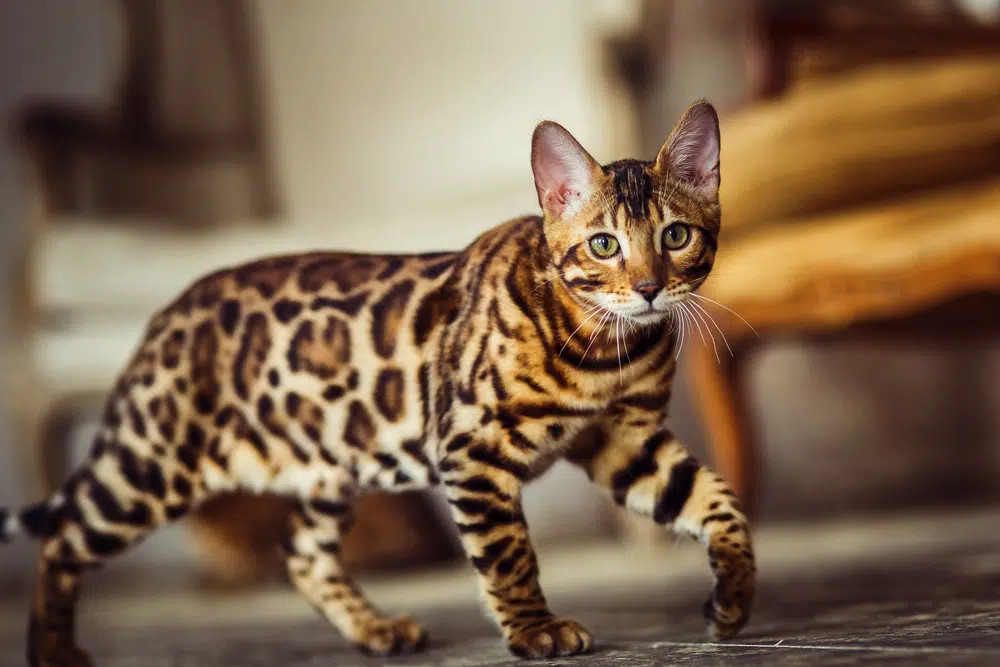 Bengal cat like a leopard sneaks Indoor
Bengal cat like a leopard sneaks Indoor
Image Credit: Alexander, Evgenyevich,Shutterstock
Bengal cats boast a distinctly wild appearance, primarily due to their striking spotted or marbled coats that closely resemble a leopard’s. This captivating orange cat breed was created through intentional hybridization, including crosses with the Asian leopard cat and the Egyptian Mau. Bengals are medium to large-sized cats, typically weighing over 12 pounds, and possess an unusual affinity for water, often enjoying playing in or near water sources.
Known for their energetic and playful nature, Bengals are intelligent and require plenty of stimulation and interaction. They are often described as curious, confident, and demanding of attention, making them engaging companions for active owners.
10. American Bobtail Cat
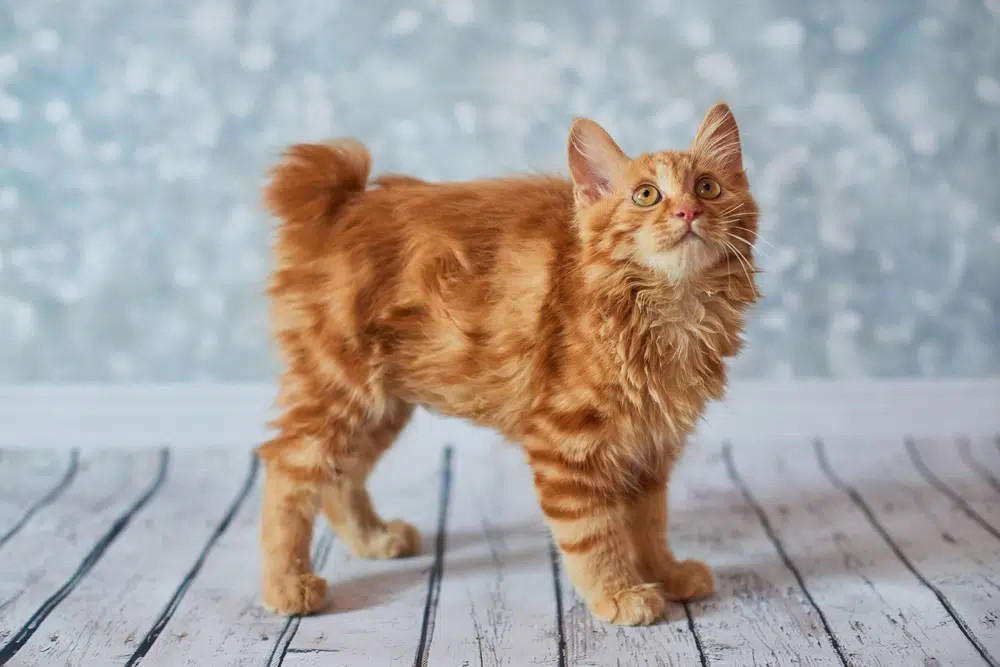 Red american bob tail cat in on wooden floor
Red american bob tail cat in on wooden floor
Image Credit: Ievgeniia Miroshnichenko, Shutterstock
The American Bobtail is a highly intelligent breed with a rugged, wildcat-like appearance. Their defining feature, the short, “bobbed” tail, is the result of a natural genetic mutation and contributes to their instantly recognizable silhouette. This breed was developed through natural selection, emphasizing their hardiness and adaptability. American Bobtails are known for their playful and engaging personalities, capable of entertaining themselves for hours with the same game.
While typically a longhaired breed, some American Bobtails may occasionally present with shorter coats. They are known to be adaptable, friendly, and good with families, including children and other pets.
11. Abyssinian
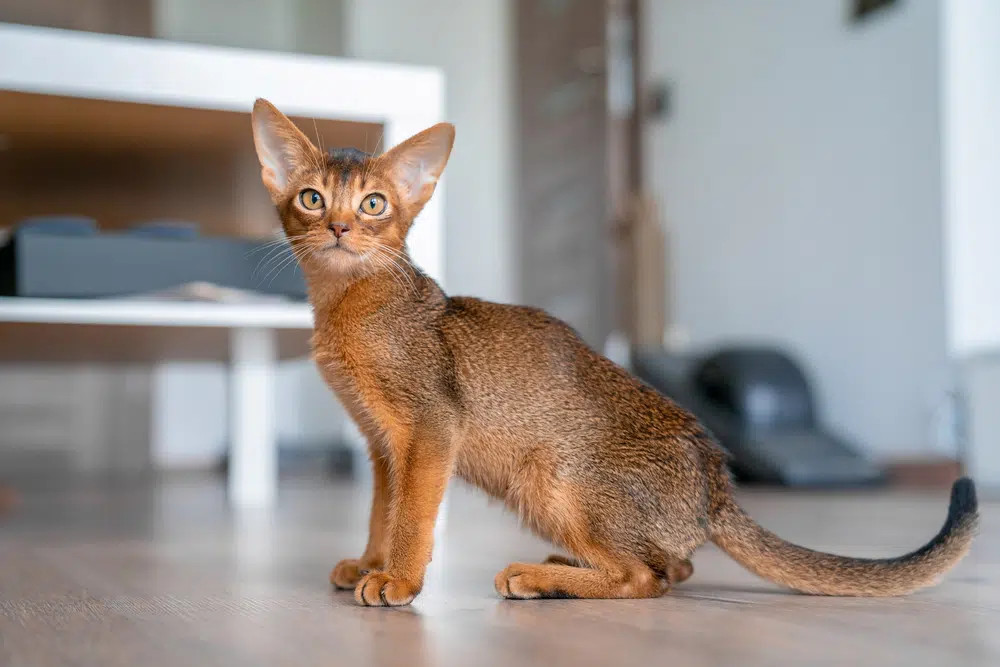 Abyssinian cat
Abyssinian cat
Image Credit: Pandora Pictures, Shutterstock
Abyssinians are elegant, shorthaired cats that require considerably less grooming maintenance compared to many other orange cat breeds. However, they are highly active and energetic cats that thrive on attention and social interaction. The breed’s origins are debated, with experts proposing both Egypt and Ethiopia as potential ancestral homelands.
Abyssinians are characterized by their distinctive “ticked” tabby coat, where individual hairs exhibit bands of different colors, creating a subtly shaded and agouti effect. They are intelligent, curious, and known for their playful and outgoing personalities, often described as “dog-like” in their devotion and interactive nature.
5 Fascinating Facts About Orange Cats
1. No Solid Orange Cats Exist
It’s a surprising fact, but truly solid-colored orange cats are non-existent. All orange cats display some form of pattern. Many are indeed orange and white cat breeds, showcasing bi-coloration. The orange coloration always manifests in a pattern, categorized into four main types: Mackerel stripes (resembling tiger stripes), Ticked stripes (alternating light and dark bands on individual hairs), Classic stripes (swirled patterns), and Spotted patterns.
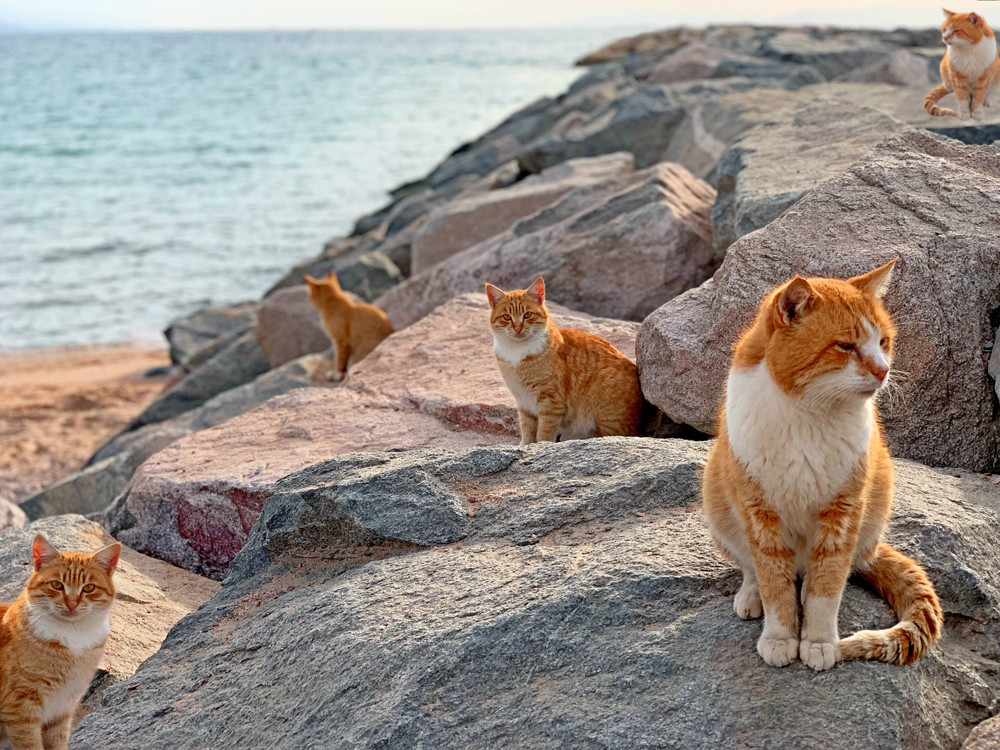 Red cats on sea beach in Japan island
Red cats on sea beach in Japan island
Image Credit: SakSa, Shutterstock
2. Orange Fur is the Feline Equivalent of Red Hair
Remarkably, the same pigment responsible for red hair in humans, pheomelanin, is also the pigment that produces orange coloration in cats. Pheomelanin can create a spectrum of colors ranging from pale cream to vibrant red-orange. It’s certainly intriguing to consider why red hair is less common in humans than orange fur is in cats!
3. Orange Cats Are Predominantly Male
The gene responsible for the orange coat color in cats is located on the X chromosome. For female cats to exhibit an orange coat, they must inherit two copies of this gene (one on each X chromosome). Males, with only one X chromosome (XY), only need to inherit a single copy of the orange gene to display the orange hue. This genetic mechanism results in a significantly higher proportion of male orange cats, with estimates suggesting that only about one in five orange cats is female.
4. Orange Kittens Are Born with an “M” Marking
All orange kittens are born with a distinct “M” marking on their foreheads. This unique marking has been the subject of various folklore and stories throughout history. For some, the “M” is interpreted as representing Mary, in reference to the Virgin Mary. Others believe it symbolizes Mohammed, highlighting the cultural significance attributed to this natural marking.
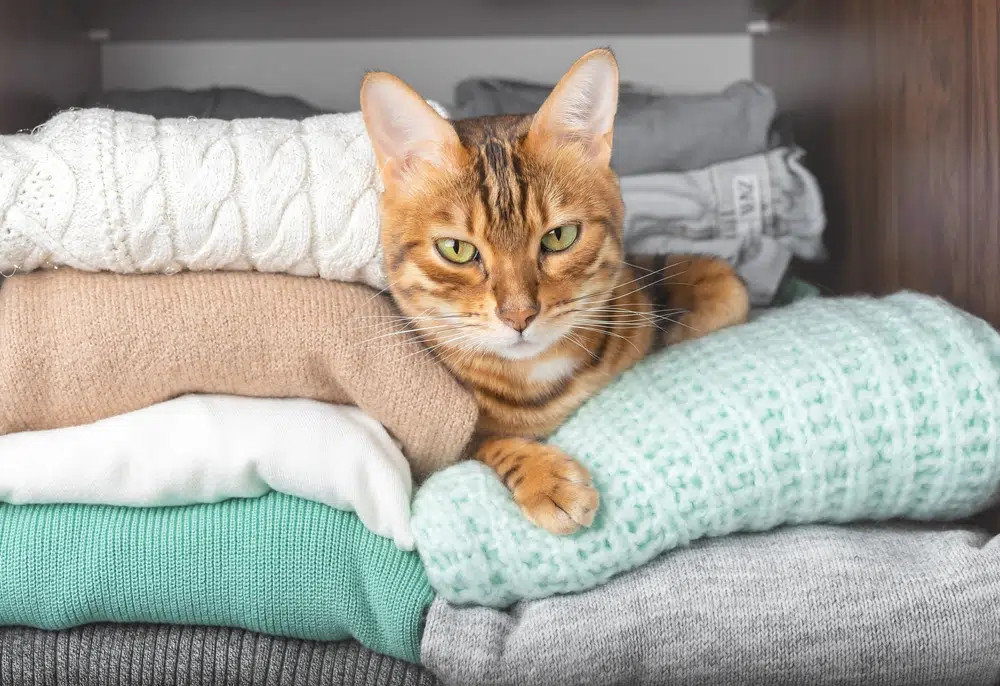 Bengal Cat
Bengal Cat
Image Credit: Svetlana Rey, Shutterstock
5. Many Famous Feline Celebrities Are Orange
Orange cats are remarkably well-represented in popular culture, with numerous famous feline characters sporting this sunny coat color. Consider iconic figures like Garfield, the perpetually hungry and sarcastic cartoon cat, Milo from “Milo and Otis,” Heathcliff, the mischievous comic strip cat, and even the charming and adventurous Puss in Boots, originating from Charles Perrault’s fairy tales and popularized by the Shrek franchise. Their popularity in media further cements the endearing image of orange cats in the public consciousness.
In Conclusion
While truly solid orange coats are genetically impossible in cats, their diverse and stunning orange-patterned fur makes them consistently popular choices for movie studios, authors, and, most importantly, loving pet parents. From the luxuriously fluffy Turkish Angora to the uniquely elfin Devon Rex, the orange coat is a recurring and beloved trait across numerous breeds.
While temperament can vary depending on the specific breed, orange cats are generally known for their friendly, playful, and affectionate personalities, making them wonderful companions for individuals and families seeking a loving feline addition to their lives.
See also:
Featured Image Credit: Tovsla, Shutterstock

